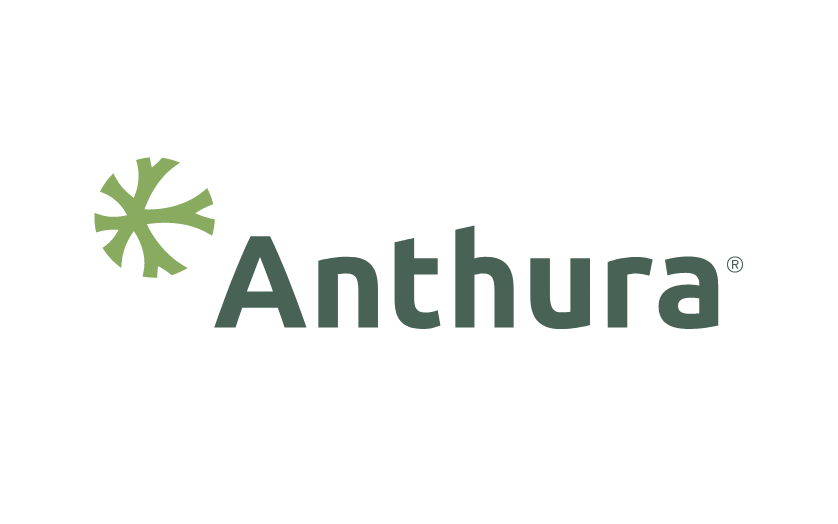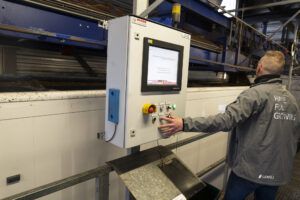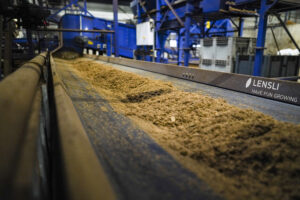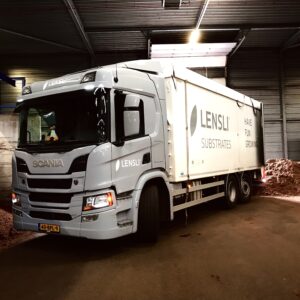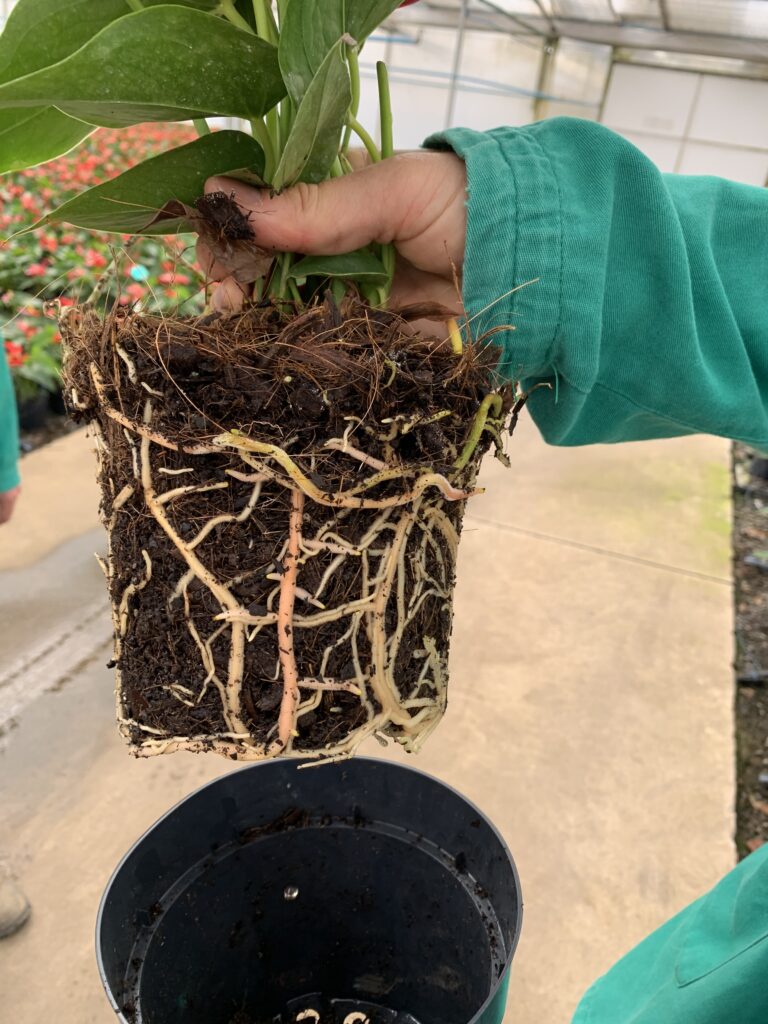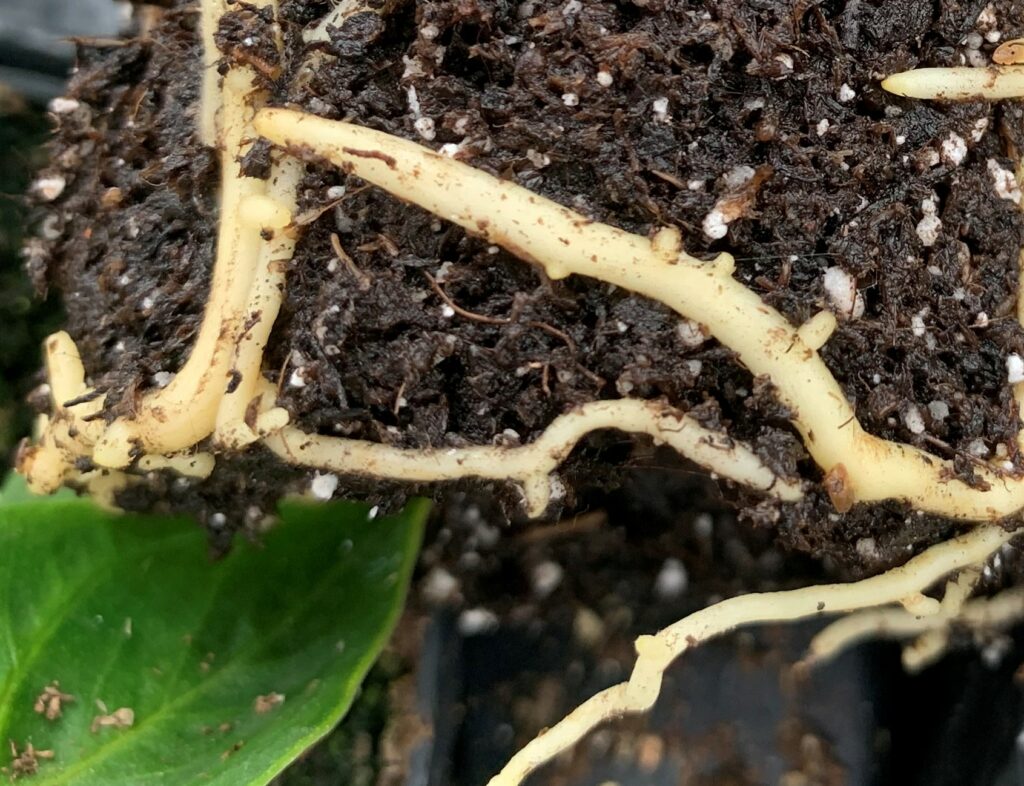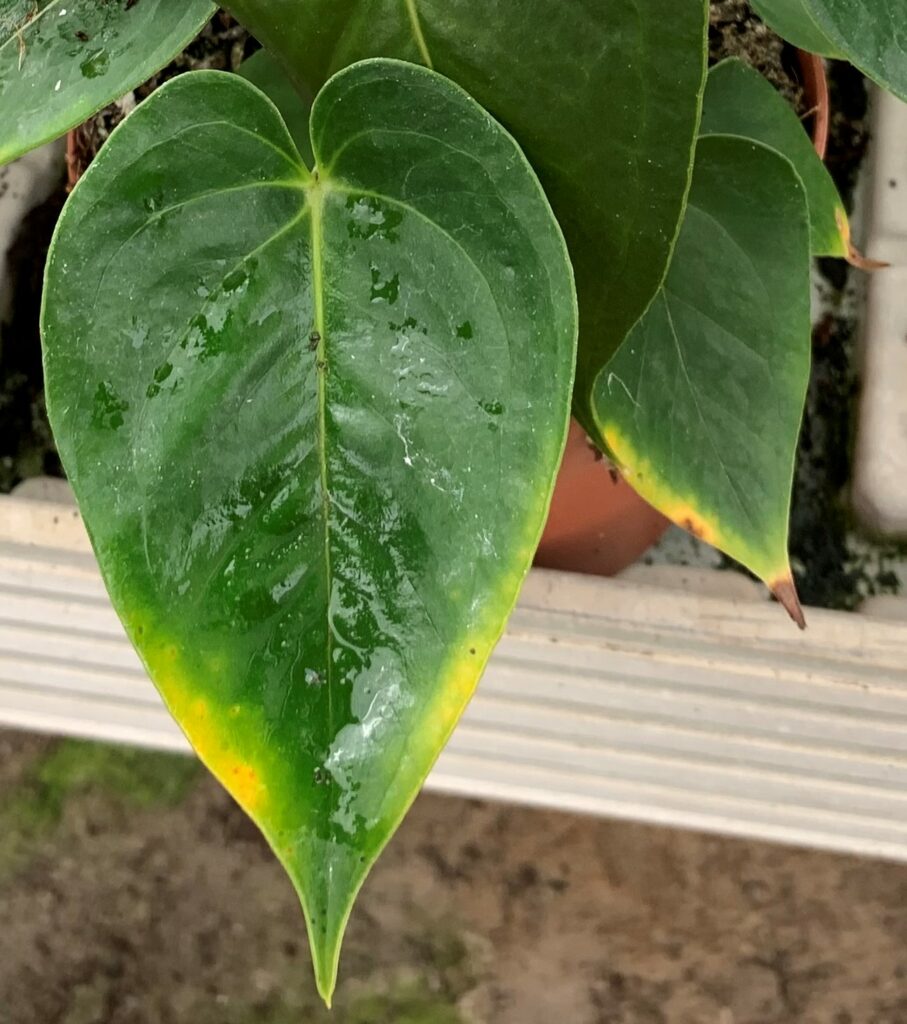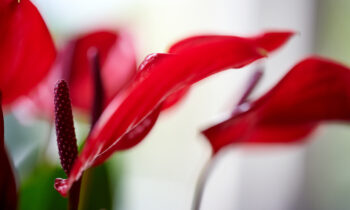The quality of a plant depends on the correct use of the right substrate with the right properties. One substrate is not the same as another: not only is there a lot involved in developing the composition, but consistent production and the correct method of use are important aspects when using substrates.
Anthurium cultivation generally involves the use of ‘airy substrates’. These are substrates that contain a lot of air, even in humid conditions. These substrates now often consist of a high proportion of peat products supplemented, for example, by coir or perlite. These are substrates for which a lot of experience and knowledge are readily available. Substrates can contain a variety of raw materials. The crop and your ultimate needs and objectives are what determine which elements and their corresponding properties are important for the substrate to be used.
Important raw materials for substrates are:
Peat is peat moss, also known as sphagnum, decomposed under oxygen-poor conditions. There are different types of peat and each type has its own physical properties. Peat is acidic, pure, and has practically no nutrients, but it can hold water well and buffer nutrients. Since it is a product that in itself contains few nutritional elements, it can be widely used. At the moment, peat is still the most important raw material for the production of potting soils and substrates. Peat extraction will take place in a responsible manner, taking into account the natural value of the environment (see box RPP).
Coconut
Many used coconut products come from the outer bark of the coconut. Coir pith has an easily processable, homogeneous, fine structure with a reasonably high air content. It holds water well, making it readily available to crops, and has a very fast rewetting rate. Coconut fibre is used as a component in substrate mixtures and provides a coarser structure that drains easily. It is very important that the coconut has been properly treated. Coir pith naturally has an absorption complex of mostly potassium (K) and nitrogen (N) which is exchanged and/or rinsed out before use.
Perlite
Perlite is a glassy rock of volcanic origin which is ground, sieved and then ‘puffed’ at around 1000°C. It is highly porous, but also contains a certain amount of connected pores. Perlite can hold a lot of water and air and affects water absorption, which can be improved through its use. Perlite reduces the shrinkage of potting soil mixtures and contributes to an airy, stable structure. Perlite is often used in mixtures for ebb and flow cultures.
Influence of pot sizes on the compositions
Of course, the size of the pot influences the composition to be used. In general, the rule is that the smaller the pot size, the finer the substrate, mainly due to processing. However, make sure that the substrate is sufficiently airy. A small pot can quickly become too wet.
As an example, a substrate for a small pot size (9 and 12 cm diameter) might consist of:
• 25% fine Swedish peat moss;
• 25% fine peat fraction;
• 25% coarser peat fraction;
• 25% coconut and perlite.
On the other hand, the larger the pot, the coarser the structure of the composition should be. Watering larger pots at the start is done from above as well as from below, and from the final stage usually only from below. The capillary action of the substrate is of great importance here. As an example, a substrate for a large pot size (14 en 17cm diameter) is :
• 25% coconut fibres;
• 25% average fraction;
• 50% coarser peat fraction.

Hörle Torv Sweden (peat).
What does less peat mean for pot Anthuriums?
Peat is the basis for many substrate compositions, but in recent years there has been a change in the market. The use of peat in Germany has been under discussion for some time, but in the Netherlands it is also increasingly under a magnifying glass. The overall expectation is that peat use will eventually diminish. The sector has set itself the target of using 35% circular and renewable raw materials by 2025. Low or peat-free cultivation requires a different approach from the grower. The use of circular and renewable raw materials influences the composition and structure of the potting soil. Because of this, peat-free substrate requires a different approach to regular substrate. It is mainly a matter of learning to deal with new materials and other combinations. Raw materials that are increasingly being used in addition to peat and coconut include bark, wood fibre and rice husks.
Tree bark
Tree bark is a natural product that is left over from wood production. There are two types of bark: composted bark and non-composted bark. Non-composted bark is harder and comes mainly from Pinus Pinaster. This suspension type is currently the most widely used. Bark is used in various fractions; it not only gives the substrate strength and increases the percentage of air, but also retains nitrogen.

Tree bark.
Wood fibre
Wood fibre is produced from wood chips, originating from untreated logs. During production, wood chips are fiberized under high mechanical pressure at a high temperature. The properties depend on the fineness of the wood fibre and usually the structure becomes more open in mixtures. Wood fibre ensures nitrogen retention.

Wood fibre.
Rice husk
Rice husk is the outer husk of rice. The rice husks certified by the Regulation on Commercial Potting Soil (RHP) are sterilized. Adding rice husk to substrates greatly increases the air content. Rice husk is a relatively fresh organic material and fixes a little nitrogen temporarily. Rice husk is rich in silicon.

Rice husk.
Buffer function
When changing compositions to include a lower amount of peat, a weaker buffer for pH and nutrition must be taken into account. The high absorption complex of peat allows it to absorb and release elements during peaks and troughs in nutrition and pH. With other materials, such as wood fibre, tree bark and coconut, the buffer is lower. These raw materials retain fewer elements, which makes the substrate more unstable. To solve this, you might work with compost or clay, for example, which have a reasonable buffer function. In addition to the buffer function, the fact that some raw materials often already contain nutritional elements naturally should also be taken into account. By way of illustration, bark naturally contains manganese and compost a little more potassium. When using these raw materials, you should therefore take into account the possibility that these elements may be released.
Nitrogen immobilization
Nitrogen immobilization of substrate also plays a major role in the switch to substrates with less peat. Nitrogen immobilization should be considered when using wood fibre or rice husks, for example. Wood fibre and rice husks are, in fact, relatively young organic products which are subject to decomposition by bacteria, requiring nitrogen. As this is not the case with peat mixtures, it requires a different working method. Nitrogen retention is a short-term effect that can be offset by fertilization.
Important labels
RHP is an independent labelling organization for raw materials and substrates. In principle it concerns chain control from raw material location to delivery. The RHP quality mark includes chemical, physical and phytosanitary controls of raw materials and finished products. This includes control of heavy metals, human pathogens, and weeds, as well as the specification and subsequent control of chemical and physical properties. Substrates with an RHP quality mark are safe if used responsibly (www.rhp.nl). The substrates used by Anthura, developed and supplied by Lensli, stand for quality and meet the strict RHP standards and requirements. RPP (Responsibly Produced Peat) stands for the responsible extraction of this raw material, which is important for horticulture, with three specific goals: no peat production in areas of high natural value, preferential restoration of the peat area after production, and long-term availability of peat as a raw material for the horticulture sector (www. responsiblyproducedpeat.org).
Physical aspects
In addition to chemical aspects, such as the buffer effect and nitrogen immobilization, it is also a good idea to take a close look at the physical aspects. These are very important for your watering and potting strategies, among others.

Excellent rooting.
Consider parameters such as density, potting factor, stability, pores, water, air and the rate of water absorption. When changing the composition, it is important to look at the physical properties of the existing substrate and those of the new one. The greater the differences, the more you will need to monitor its use. Pores can be filled with water or air. The raw materials used and the structure of the substrate (coarse/fine) determine the size of the pores. Fine pores hold water longer than coarser pores. In wetter conditions, a fine substrate has relatively fewer air-filled pores than a coarser substrate. Incidentally, coarse does not mean that a substrate consists of large pieces. For most Anthurium cultivations, an air percentage of 15% to 25% applies. Maintaining this range ensures that the roots continue to have sufficient oxygen, even in wet conditions and in different cultivation systems.
Speed of water absorption
Of course, the speed of water absorption and the distribution of water are also important factors in the composition of a substrate. Whether this should be fast or slow depends on the crop and the customer’s wishes. Since peat naturally absorbs and retains water well, the properties of alternative raw materials should be carefully considered when compositions change and the percentage of peat drops.
Potting factor
The potting factor refers to compressibility. This parameter is very important in potting. When a substrate is easily compressible, there is a chance that the properties will change as a result of pressure during potting. Pressing harder means finer pores, wetter conditions, and less oxygen. The right composition can contribute to more homogeneous potting and thus create more equal conditions in the pot. An additional advantage is that unnecessary substrate consumption is avoided.

Beautiful rooting.
Conversion to less peat
The use of more circular and renewable raw materials will increase and responsibly-harvested peat will be used in a more targeted way. (RPP label) As explained earlier, most alternatives to peat have a lower moisture buffer, which means they absorb and retain water less well. The chemical aspects also deserve the necessary attention. Adjusting the basic fertilizer with a little more nitrogen is sometimes necessary. It is important to think in terms of the characteristics of the substrate and the needs of the plant when changing to peat-poor or peat-free potting soil. The properties and instructions for use of a new substrate should, where possible, be similar to those of the old one.
A substrate producer starts building a house, as it were, and the grower completes it and eventually takes control. The interaction between pH and fertilization will become a more direct concern for the grower, who will have to react more quickly. One size fits all does not exist, even if you start by using less peat. Currently, there are already some good basic compositions with less or no peat available for Anthurium cultivation, which growers can use as a basis for further work.
This article has been made possible with the help of Wim Veninga (Account Manager) and Ronald Keijzer (Quality Director) of Lensli Substrates, as well as RHP.
It is always preferable to buy substrate for your cultivation from specialist suppliers, so that your Anthurium plants can grow at their best and our varieties reach their full potential. Should you decide to make your own substrate, always make sure that it is sufficiently rinsed and buffered if you are using coconut. High salt content (NaCl) and poor buffering are particular concerns. If the coconut was sourced near the coast, it will contain a lot of sodium. It is preferable that the product is sourced from inland. The coconut must be at least one year old before it can be used as a substrate.
A minimum of three rinse sessions are usually required to remove excess salts from the material. Rinsing should be done with water with the lowest possible EC. The first two rinsing sessions must be carried out for at least two hours. After this session, the EC should be measured. If it is still too high, rinse again with clean water. The final rinse must be carried out with calcium nitrate CaNO3 (15.5% N and 26.5% CaO, 1 gram per litre EC ± 1.2). Then, 2 kg of Dolokal (± 90%CaCO₃) per cubic metre of substrate should be added.

Rinsing of coconut fibre.
